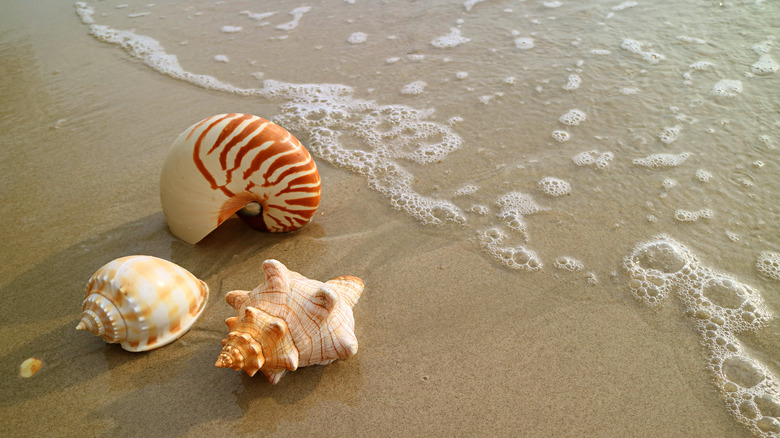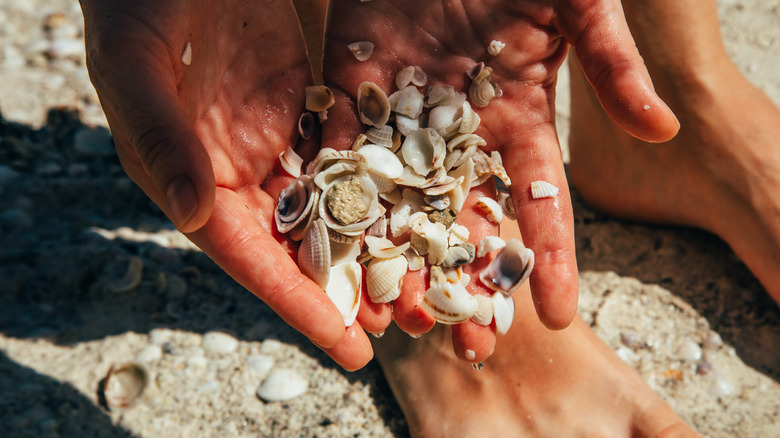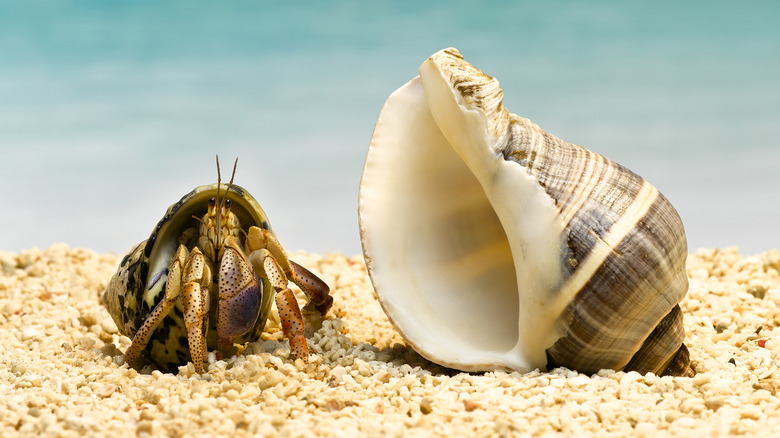If You Take Seashells From A Beach, You May Be Doing More Harm Than You Realize. Here's Why
Collecting seashells on the beach seems like a harmless activity. You may think it's no big deal to take a few home with you from a trip to your local beach or on vacation. It seems like the perfect souvenir. As it turns out, it's not. You could be doing harm to sea life, causing erosion, robbing crabs and other creatures from their homes, and in some places, it's actually illegal.
Now you may be thinking, it's just me taking a shell or two back to my house to display somewhere, but consider how many people think exactly the same thing. There was a study published in 2014 by the journal Plos One that showed how tourism appears to have affected the shell population on a Llarga Beach in Spain (though that wasn't the original aim). It was done in two parts. The first part of the study was carried out between 1978 and 1981, and the second, 30 years later, between 2008 and 2010. The beach studied didn't have any commercial fisheries or major building between those dates, but the shells diminished around 60% while tourism rose 300%. You aren't the only one with this idea.
The damage collecting seashells can do
One of the biggest reasons not to take shells from the beach is that you're potentially harming sea life. That doesn't just apply to shells with live animals in them. Creatures like hermit crabs depend on discarded shells to give them new homes as they outgrow their old ones. Birds use shells for nesting material. Some animals inside shells anchor themselves to a rock, and if you pull them off, you can kill them. Other life forms depend on shells to anchor them in one place like coral and seagrass. Smaller fish hide in old shells to evade larger ones who think they'd make a great snack. You may not realize that your "empty shell" might have smaller creatures in it that you don't notice (particularly inside a spiral shell), who will die outside of their environment.
Another thing that shells are needed for is to create new sand as they break down into smaller and smaller pieces. Less of that sand can affect erosion rates on the beach. As they break down, calcium carbonate enters the water again, and can create new shells. In your head it might feel like you're just taking one off a beach of endless shells, but let's look at the state of Florida for example. Imagine each one of the 140.6 million people who visited the state in 2023 took home only one shell and consider what that would do to the beaches. That's not counting residents doing the same thing.
The law about seashells and some alternatives
Taking shells off the beach is illegal in some places. In fact, it's also illegal to take sand in some areas, or anything else, like the sea glass on California's unique Glass Beach. You may have it confiscated as you leave an area like Costa Rica, or the U.S. Virgin Islands. There may also be fines. It's illegal in some European countries like the United Kingdom, France, and Greece (which is certainly known for its beaches), or Italy's Sardinia, which fines you for removing sand and shells alike. It's a good idea to eschew shell shops as well, as they often kill the creatures to create items for people to purchase.
There are other things you can do to create the perfect souvenir from your beach vacation. You can take as many pictures of those shells as you like. Have your kids draw pictures of their favorite shells, or bring a book on sea creatures and their shells to identify so they can observe them in the wild and tell a story about them later. Create a sand castle decorated with shells for the perfect Instagram shot, and then let it wash back into the sea. Make an impression in the sand with the back of a shell and fill the imprints with pretty stones to create a sea collage for another great pic idea.


